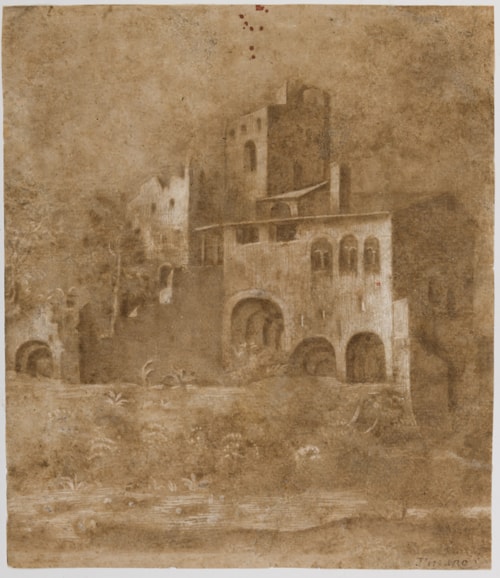
Attributed to Giorgio Barbarelli da Castelfranco, called GIORGIONE
Castelfranco Veneto c.1473/74 - Venice 1510
Biography
Nothing is known of the early training of the painter Giorgio da Castelfranco, known as Giorgione (or ‘Zorzi’ in the local Venetian dialect), who was of humble origins but became one of the most significant artists of the Renaissance in Venice. Indeed, what we know of the artist’s career as a whole is limited; as Terisio Pignatti has noted, ‘in spite of the great success and fame that accompanied Giorgione’s short life, there is very little in the way of documents and reliable sources to enable us to write a biography that goes into any more detail than the very sketchy account that tradition has passed on.’ Furthermore, Giorgione’s modern fame, by contrast with any other artist of comparable stature, rests on just a handful of securely documented or attributed works. He appears to have joined the studio of Giovanni Bellini in Venice sometime in the late 1480s, and his first independent works are likely datable to the early 1490s.
One of his earliest known paintings is a large altarpiece of The Virgin and Child with Saints Francis and George, known as the Pala del Castelfranco, executed around 1504 and still today in the cathedral in the painter’s native town of Castelfranco Veneto. In 1507-1508 Giorgione painted a canvas, now lost, for the audience chamber of the Doge’s Palace in Venice, and in 1508 he worked alongside Titian on the fresco decoration of the exterior of the Fondaco dei Tedeschi, near the Rialto bridge, of which only ghostly fragments survive today. These were among the very few public works that the artist painted, since, unlike many of his contemporaries, Giorgione seems to have had little interest in obtaining major civic or religious commissions in Venice; he did not, for example, work for any of the Scuole of the city. He did, however, paint a handful of façade decorations for Venetian palaces, all of which are now lost.
Most of Giorgione’s output was in the form of small-scale easel pictures and portraits, the result of private commissions from Venetian collectors. The landscape backgrounds in his paintings seem to have played a particularly significant role in his artistic methodology; indeed, as the scholar Max J. Friedländer observed, ‘no one can deny Giorgione, the Venetian master, the distinction of being the first great landscape painter.’ The artist’s contemporary biographer, the Venetian nobleman Marcantonio Michiel, noted in particular two paintings by Giorgione that he described as either a ‘paese’ or a ‘paesetto’; the small canvas known as The Tempest or La Tempesta, painted between 1505 and 1508 and now in the Galleria dell’Accademia in Venice, and the larger Three Philosophers in a Landscape of c.1508-1509, today in the Kunsthistorisches Museum in Vienna. The fact that no signed and very few dated works by Giorgione have survived has led to much scholarly controversy over the extent of his painted oeuvre, as well as distinguishing his work from that of the young Titian, who was profoundly influenced by him. Titian was several years younger than Giorgione, for whom he seems to have worked as an assistant, but the two artists soon came to be seen as artistic rivals and the leaders of a new school of painting in Venice. Giorgione died of the plague in Venice in September 1510, at the age of thirty-six.


